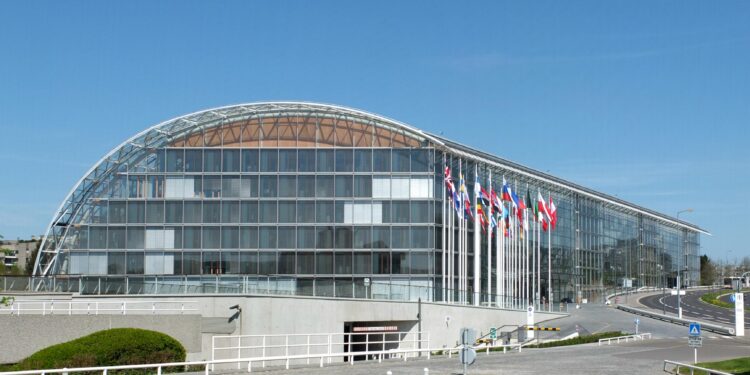The European Investment Bank (EIB) has announced a €1.6 billion investment in a major energy infrastructure project connecting Spain and France. The financing will support the development of the 2.2 gigawatt (GW) electricity interconnector, a critical link aimed at enhancing cross-border power exchange, bolstering grid stability, and accelerating the integration of renewable energy across the two countries. This strategic move underscores the EU’s commitment to building a more resilient and sustainable energy network in line with its climate and energy goals.
EIB Boosts Cross-Border Energy Capacity with Major Spain France Interconnector Investment
The European Investment Bank (EIB) has committed a landmark €1.6 billion to enhance the energy infrastructure between Spain and France. This substantial investment is directed towards the development of a 2.2GW cross-border interconnector, aimed at significantly boosting capacity and reliability in energy transmission across the Pyrenees. This project is expected to facilitate increased integration of renewable energy sources, reduce bottlenecks, and promote energy market fluidity within the region.
Key benefits of the interconnector project include:
- Enhanced Energy Security: By strengthening the electricity grid, the link ensures a more stable power supply between both countries.
- Renewable Energy Integration: Accommodates growing solar and wind power generation, crucial for Europe’s green energy targets.
- Market Efficiency: Encourages competitive electricity trading and price convergence across the Iberian Peninsula and France.
| Parameter | Details |
|---|---|
| Capacity | 2.2 GW |
| Investment | €1.6 billion |
| Impact | Improved cross-border energy flow |
| Completion Timeline | Expected by 2027 |
Strategic Impact on Renewable Integration and Grid Stability Across Regions
The injection of €1.6 billion into the 2.2GW Spain-France interconnector marks a pivotal advancement in the cross-border energy landscape, directly enhancing the capacity to transfer renewable energy between the Iberian Peninsula and the French grid. This infrastructure upgrade is poised to mitigate regional disparities in renewable energy generation, particularly solar and wind, by enabling excess production in one zone to be absorbed in another. As a result, both countries can reduce their dependence on fossil fuels and optimize the utilization of cleaner energy sources, fostering a resilient, flexible, and decarbonized grid system. The investment not only accelerates the transition towards renewable integration but also tightens synchronization across markets, instrumental in supporting the European Union’s climate and energy targets.
Key benefits of the enhanced interconnector include:
- Grid stability: Smoothing fluctuations caused by intermittent renewable supply and demand imbalances.
- Energy security: Diversification of energy flows reduces the risk of shortages and blackouts.
- Market efficiency: Increased cross-border capacity leads to more competitive pricing and energy trading opportunities.
- Regional cooperation: Strengthens ties between Spain and France, setting a precedent for pan-European grid cohesion.
| Aspect | Before Interconnector | Post-Investment Outlook |
|---|---|---|
| Renewable Energy Exchange | Limited cross-border flow | Seamless integration up to 2.2GW capacity |
| Grid Flexibility | Regional constraints and bottlenecks | Enhanced balancing of supply-demand dynamics |
| Market Impact | Fragmented energy pricing | More dynamic and efficient electricity markets |
Recommendations for Stakeholders to Maximize Benefits from Enhanced Energy Connectivity
To fully harness the potential of the €1.6 billion Spain-France interconnector investment, stakeholders must prioritize collaborative frameworks that enhance cross-border energy flow efficiency. Policy makers are urged to streamline regulatory approvals and foster harmonized market rules that incentivize renewable integration. Meanwhile, grid operators should invest in advanced monitoring and control systems that enable real-time balancing, reducing transmission losses and maximizing capacity utilization. Industry players and investors can also explore complementary projects such as energy storage and demand response to optimize network resiliency.
- Encourage joint R&D initiatives for grid innovation and cybersecurity
- Promote transparent data sharing between France and Spain to support market transparency
- Engage local communities to ensure social acceptance and mitigate environmental impacts
From a strategic perspective, aligning financial and technical resources is essential. Below is a concise overview highlighting key stakeholder priorities and recommended actions:
| Stakeholder | Recommended Action | ||||||||||
|---|---|---|---|---|---|---|---|---|---|---|---|
| Policy Makers | Harmonize regulations; accelerate permitting processes | ||||||||||
| Grid Operators | Implement smart grid tech; optimize operational flexibility | ||||||||||
| Investors | Support complementary infrastructure like storage | ||||||||||
| Local Communities | Engage early; contribute to sustainable development |
| Stakeholder | Recommended Action |
|---|---|
| Policy Makers | Harmonize regulations; accelerate permitting processes |
| Grid Operators | Implement smart grid tech; optimize operational flexibility |
| Investors | Support complementary infrastructure like storage |
| Local Communities | Engage early; contribute to sustainable development |
If you need help enhancing or formatting this content further, just let me know!
Final Thoughts
The €1.6 billion investment by the European Investment Bank in the 2.2GW Spain-France interconnector marks a significant milestone in strengthening cross-border energy infrastructure. By enhancing grid stability and enabling greater integration of renewable energy sources, the project is set to play a crucial role in advancing Europe’s clean energy transition and energy security goals. As construction progresses, stakeholders will be closely watching its impact on regional energy markets and the broader European objective of achieving a more interconnected and sustainable energy system.



![Poland and France push ahead with defense pact after Paris talks [VIDEO] – TVP World](https://europ.info/wp-content/uploads/2026/01/3036754-poland-and-france-push-ahead-with-defense-pact-after-paris-talks-video-tvp-world-350x250.jpg)












